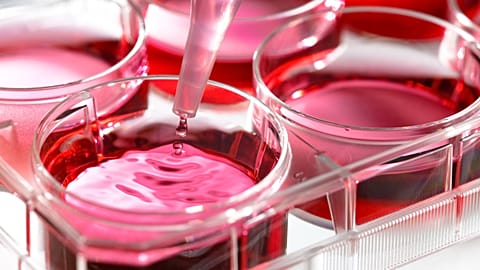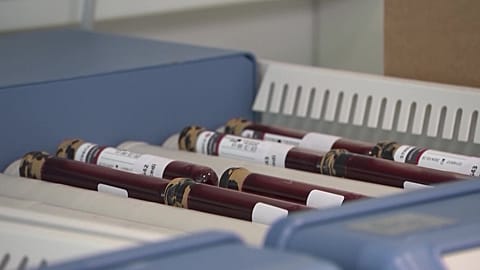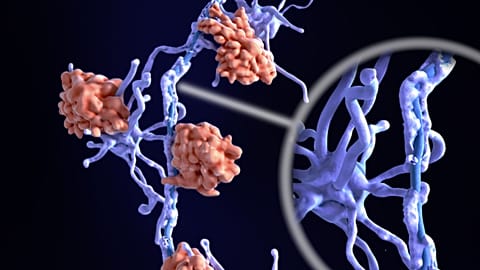In a big reassessment study, scientists have found a “definitive association” between gut bacteria and autism spectrum disorder.
The relationship between the gut microbiome and autism spectrum disorder (ASD) has eluded the most brilliant minds for over 20 years. But new technology offers a ray of hope.
In a groundbreaking study published in the scientific journal Nature Neuroscience, scientists claim to have made a “definitive association” between temporal changes in gut microbiome composition and observable traits and symptoms of individuals with ASD.
Employing a novel algorithm, the researchers delved into decades of research and confirmed an intricate relationship between the gut microbiome and ASD, paving the way for future advancements in therapy and treatment.
Autism is a complex neurodevelopmental condition characterised by a wide range of cognitive, behavioural, and communication impairments. It is a spectrum disorder, meaning the symptoms and the severity vary widely among individuals.
The gut microbiome is the community of microorganisms - ‘good’ and ‘bad’ bacteria - residing in our digestive tract. The healthy balance of these bacteria plays a vital role in digestion, metabolism, immune function and overall health.
The potential link between autism and the microbiome first emerged in the 1990s when parents started reporting changes in their autistic children’s behaviour when the children took antibiotics, medication that kills some gut bacteria.
The anecdotal observations sparked an enormous wave of scientific inquiry, leading to dozens of studies suggesting relevant - but inconsistent - variations in the gut microbial composition of individuals with ASD.
Weary of funding further studies that would not move the needle and possibly add to the confusion, the Simons Foundation Autism Research Initiative (SFARI) - a research program dedicated to unravelling the causes and mechanisms of ASD - decided to act. They hired Dr Gaspar Taroncher-Oldenburg, at the time an independent scientist, to “help make sense of it all,” and “do the landscape analysis of the work that was currently out there on the microbiome and autism,” said John Spiro, senior vice president and senior scientist at SFARI.
Taroncher-Oldenburg - now director of Therapeutics Alliances at New York University - teamed up with Dr Jamie Morton, a computational biologist and computer scientist who at the time was a postdoc at the Flatiron Institute - an arm of the Simons Foundation - to advance the research through computational methods.
A fresh approach to the autism-microbiome puzzle
Most of the studies that have been done in the past around ASD and the microbiome “showed little overlap among them,” says Taroncher-Oldenburg, and “nobody could really point to a specific mechanism”.
“Everybody we talked to would say, maybe it is the immune system, maybe it is the diet, and all of that channelled through the gut,’ Taroncher tells Euronews Next.
It is also widely hypothesised that the immune system plays a significant role in the development of ASD.
“So we said, okay, we have 10, 15, 20 years of data. Nothing seems to make real sense, but there is something there. What is it? Let's just take a step back and look at it all with a fresh perspective,” he remembers.
A diverse team of 43 experts from across the globe was assembled to re-analyse 25 previously published datasets containing microbiome and other “omic” information - such as diet, immune system response, markers of inflammation, and gene expression profiles in the human brain.
But when it came to analysing all these data sets, there was “a long list of challenges that had to be overcome,” says Morton, such as aggregating the different data across the 25 studies to draw direct comparisons.
The scientists “certainly looked at more than 25 studies”. However, they dedicated almost a year to accessing, cleaning, and curating the data, which determined the final pick.
Importantly, with each dataset and the help of novel and sophisticated algorithms, the team identified the best-matched pairs of autistic and neurotypical individuals - individuals without autism - in terms of age and sex, as these are the “two major confounders” in the study of the microbiome and autism, respectively.
“The microbiome of a four-year-old is very different from a seven from a 10-year-old. And then, in terms of autism, there is a dichotomy in terms of incidence between girls and boys or boys and girls. “
Research suggests that autism is about 4.2 times more prevalent in boys than girls. Mixing the results from girls and boys would dilute the results.
Using this approach, the researchers were able to "dramatically increase" the number of data points they could analyse.
“And so instead of taking averages per study, we had a tonne of pairs of children, and then we aggregated those pairs over all the studies, and that's where the signal really shined,” said Morton.
Did the big assessment determine a relationship between the microbiome and ASD?
The study revealed “a connection between the microbiome and various immune genes,” as well as “connections to microbiome and diet,” many of which are “tied into putative neurological pathways and neurotransmitters, which are key for brain signalling,” Morton told Euronews Next. “And that was the part that kind of shocked me.”
In other words, "the association is real - that is the take-home from our study. The mechanics of it still have to be worked out," said Taroncher-Oldenburg.
There was also “a huge overlap that was very, very unexpected” between microbes associated with autism and those identified in a recent long-term faecal microbiota transplant (FMT) study that suggested long-term benefits on autism symptoms and gut microbiota through microbiota transfer therapy, says Taroncher-Oldenburg.
“The original FMT study did show an improvement in the symptoms in these autistic children. And then our study provided more evidence on why that could be the case,” he notes.
The new assessment study “does not demonstrate that the microbiome ‘causes autism’ or anything like that,” Spiro added, “it does demonstrate a statistical correlation between altered microbiome and autism. But the direction of causality is still not clear”.
“We also don't say we have a list of bugs, and in fact, this is something that we very much and vehemently avoided,” says Taroncher-Oldenburg, because “maybe it's not the microbes that are important, but the genes they contain and the functions they are performing”.
It still could be the case that microbiome dysregulation is due to, for example, dietary preferences of people on the autism spectrum, who tend to be “very picky eaters,” said Morton.
A new discipline: Paving the way for a new era
Moving forward, Taroncher-Oldenburg and Morton’s reassessment will set the groundwork for “a very powerful, analytic way of asking these questions and trying to decide what's the most appropriate computational approach to take a look at these really complex datasets,” says Spiro.
“This study required >100 times more computational power compared to most microbiome studies”, says Morton.
“This is not something you can do with a spreadsheet on your desktop,” added Taroncher-Oldenburg.
However, the future of research demands more than just advanced computer science.
“There needs to be a new discipline because computer science alone is not enough, says Morton. “These systems are so complex that you need AI coupled with statistics, coupled with biology, to pave a new infrastructure and distil its complexity.”
But the community is, finally, going through “an acceptance” that the microbiome “might be influencing who we are to a really great extent, and that it might be as important as our own genes,” Taroncher-Oldenburg notes.


















